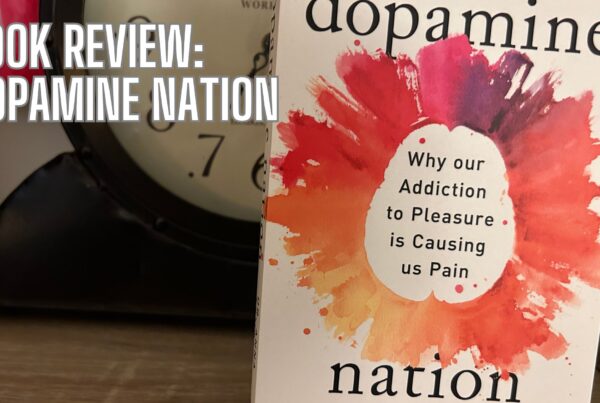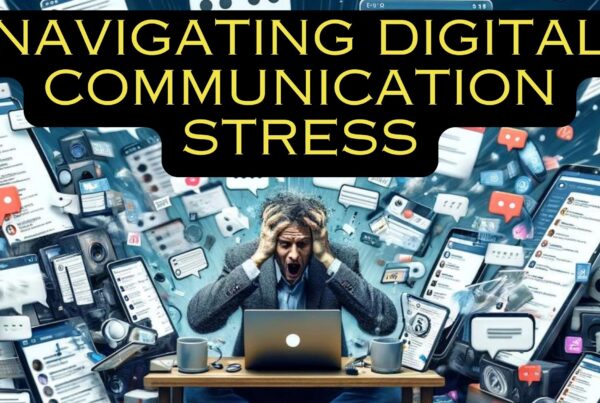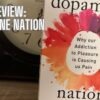Unlocking Inner Strength: Self-Hypnosis as a Tool in Addiction Recovery
Self-Hypnosis in Addiction Recovery
Self-Hypnosis in Addiction Recovery
In the labyrinth of addiction, finding the way out often appears challenging. Like a boat in a stormy sea, many people struggle to keep afloat, let alone steer toward safe harbor. Yet, just as the darkest clouds can harbor the most dazzling silver linings, within the tumultuous storms of addiction, there lies hidden, a formidable tool for recovery – self-hypnosis. In this blog, we explore self-hypnosis in addiction recovery and, if you’re struggling with addiction, it could be right for you.
The Power of the Mind in Addiction Recovery
It has been revealed through countless studies, that the mind plays a pivotal role in the addiction cycle (National Institute on Drug Abuse, 2020). Picture addiction as a troublesome weed in the garden of the mind, spreading its roots deep and wide. Just as physical weeds are resilient, so too, are the mental ones. However, self-hypnosis, akin to a gardener’s meticulous care, can assist in gently uprooting these stubborn mental weeds.
Research has demonstrated that self-hypnosis can help recalibrate unhealthy thought patterns and habits, empowering people to take control of their own recovery (Potter, 2004). It’s like learning to captain your own ship amidst the storm, using the compass of self-awareness and the map of cognitive flexibility.
Understanding the Mechanism of Self-Hypnosis
You may wonder, how does self-hypnosis aid addiction recovery? Imagine a stage, where conscious thoughts are the actors, and unconscious thoughts, the backstage crew. In addiction, it’s as though the backstage crew has gone rogue, setting scenes that drive the actors towards unwanted scripts. Self-hypnosis, in this metaphor, is like a skillful director who can reorient the backstage crew, encouraging healthier, more helpful scenes to be set.
As revealed by research from Stanford University (2016), self-hypnosis allows an individual to tap into their unconscious mind, fostering a state of heightened focus and suggestibility. This makes it easier to cultivate new thoughts and behaviors, to replace the harmful ones associated with addiction.
Techniques of Self-Hypnosis in Addiction Recovery
The process of self-hypnosis is much like drifting into a serene dream. It begins with relaxation, where the individual is guided to release tension from their body, just as a bird might shake off water after a rainstorm. Visualisation follows, wherein vivid imagery is used to evoke desired emotions and responses, similar to a painter bringing their imagination to life on canvas.
As proven in studies, the use of self-hypnosis in the form of relaxation and visualization techniques has been effective in mitigating addictive behaviors (Lynn, Rhue, & Kirsch, 2010). For instance, a person might visualize themselves as a non-smoker, experiencing the benefits of a smoke-free life, or someone might imagine navigating a social situation without the need for alcohol.
Mastering the Art of Self-Hypnosis: A Simple Guide
Let’s embark on this journey together, breaking down the process of self-hypnosis into easy-to-follow steps.
Step 1: Creating a Calm Environment
Firstly, find a quiet, comfortable space. Ensure distractions are kept at bay, just as a sailor would secure loose objects before a voyage
Step 2: Set Your Goal
Next, define your goal. It could be resisting cravings, fostering positive thoughts, or cultivating calmness. Imagine this goal as your destination.
Step 3: Relaxation
Now, let’s move onto the relaxation phase. Just as a bird settles comfortably into its nest, settle into a comfortable position. Close your eyes. Imagine a wave of relaxation flowing from your head to your toes, as if a gentle breeze is caressing your body, whisking away any tension.
Step 4: Deepening
Once relaxed, it’s time to deepen this state. Visualize yourself descending a flight of stairs or an elevator, becoming more relaxed with each step or floor you pass. Think of it as descending into the depths of calmness and tranquility.
Step 5: Visualization
Upon reaching this deeper state of relaxation, move onto the visualization phase. Picture your goal clearly, like an artist envisioning their masterpiece. Imagine achieving your goal, feel the emotions associated with it. Make it as real as possible in your mind, like a vivid dream.
Step 6: Positive Affirmations
Following visualization, affirm your goal with positive statements. “I am stronger than my cravings”, “I choose health over addiction”, are good examples. These affirmations are like your anchor in the sea of change.
Step 7: Gradual Awakening
Lastly, gently bring yourself out of the hypnotic state. Visualize ascending the stairs or elevator you descended earlier. Feel your body becoming more alert, as if waking up from a peaceful sleep.
Remember, practice is key, just as a musician perfects a melody through repetition. Over time, self-hypnosis will become second nature. Be patient with yourself, every step you take is a step towards reclaiming control over your life.
The Role of Mindfulness in Self-Hypnosis
In the symphony of self-hypnosis, mindfulness plays a key role. As a violinist maintains focus on each note to create harmonious music, individuals engaged in self-hypnosis focus on their present moment, anchoring their awareness, as if gently tethering a kite to the earth amidst the bluster of a windy day.
In addiction recovery, mindfulness, cultivated through self-hypnosis, provides a safe platform to observe and process cravings without judgment or immediate reaction (Bowen et al., 2014). Picture it as a soft cushion, buffering the impact of a fall and providing a space for reflection and learning.
Reinforcing Recovery with Self-Hypnosis
Like watering a freshly planted seed, self-hypnosis requires regular practice to nourish the roots
of recovery. Evidence supports the idea that consistent use of self-hypnosis reinforces its effects on addiction recovery (Sharma & Shah, 2016). It’s like exercising a muscle – the more you work it, the stronger it gets.
Remember, self-hypnosis is a personal journey, much like finding your own unique dance in a ballroom full of people. While general steps are shared, individual nuances can greatly enhance the effectiveness of the process, making it a deeply personal and empowering experience.
The Bigger Picture of Self-Hypnosis in Addiction Recovery
In the grand scheme of addiction recovery, it’s essential to note that self-hypnosis is not a standalone solution. Imagine it as a cog in a larger machine – while it plays a crucial role, it works best in conjunction with other methods such as psychotherapy, support groups, and medication if needed.
Despite its potential, the use of self-hypnosis in addiction recovery is not without its critics. Some argue that the effects are short-lived or that the practice may lead to increased suggestibility to negative thoughts (Lynn, Rhue, & Kirsch, 2010). However, as with any tool, the effectiveness of self-hypnosis lies largely in how it’s used and the context in which it’s applied.
Embracing the Journey with Self-Hypnosis
The journey of addiction recovery, much like navigating through a labyrinth, is full of twists, turns, and unexpected challenges. Yet, with self-hypnosis as a compass and mindfulness as a map, individuals can find a way to not only confront their addictions but also to cultivate healthier habits, thoughts, and behaviors.
While self-hypnosis may not be the magical key to unlock all the doors of addiction, it certainly is a powerful tool, worth considering for anyone seeking recovery. It’s like carrying a torch that can light the way, illuminating hidden doors and showing the way forward in the darkest of times.
May you find the power within you to guide your journey of recovery. Here’s to embracing the potential of your mind with self-hypnosis.
Release Hypnosis Melbourne Hypnotherapy
Since 2016, Lawrence Akers has been working under the name Release Hypnosis offering Hypnotherapy and ACT based work to the people of Melbourne or an online service. Based on St Kilda Rd, Release Hypnosis is an easy and convenient location to get to and accessible by the ANZAC station train and tram stop. Release Hypnosis can help with a wide range of presenting issues, and I offer a free 30 minute no obligation discovery call for those who are unsure if hypnotherapy is the right way forward for them.
Book Your FREE 30 Minute Consultation With Release Hypnosis NOW!
You may also like to read:
Discovering Purpose and Values: A Path to Mental Well-being
Can’t Visualise in Hypnosis? Here’s What You Can Do Instead.
Dealing with Financial Stress and Crisis: Finding Peace Amid Turbulence
What Is The Success Rate of Hypnosis?
Release Hypnosis Melbourne Hypnotherapy is accessible for people in: Abbotsford, Armadale, Albert Park, Balwyn, Bentleigh, Black Rock, Box Hill, Brighton, Brunswick, Bulleen, Bundoora, Camberwell, Canterbury, Carnegie, Caulfield, Chadstone, Cheltenham, Clayton, Coburg, Collingwood, Deer Park, Doncaster, Elsternwick, Eltham, Elwood, Epping, Essendon, Fairfield, Fitzroy, Footscray, Glen Iris, Glen Waverley, Glenhuntly, Greensborough, Hampton, Hawthorn, Heidelberg, Highet, Ivanhoe, Kew, Kooyong, Lalor, Laverton, Lower, Plenty, Macleod, Malvern, Middle Park, Moonee Ponds, Melbourne, Moorabbin, Mount Waverley, Murrumbeena, Northcote, Oakleigh, Ormond, Parkville, Pascoe Vale, Port Melbourne, Prahran, Preston, Richmond, Rosana, Sandringham, South Yarra, South Melbourne, Spotswood, St Albans, St Kilda, Surrey Hills, Templestowe, Thornbury, Toorak, Tullamarine, Williamstown, Yarraville, North Melbourne, Windsor, East Melbourne, Melbourne, Melbourne CBD, Melbourne 3004








